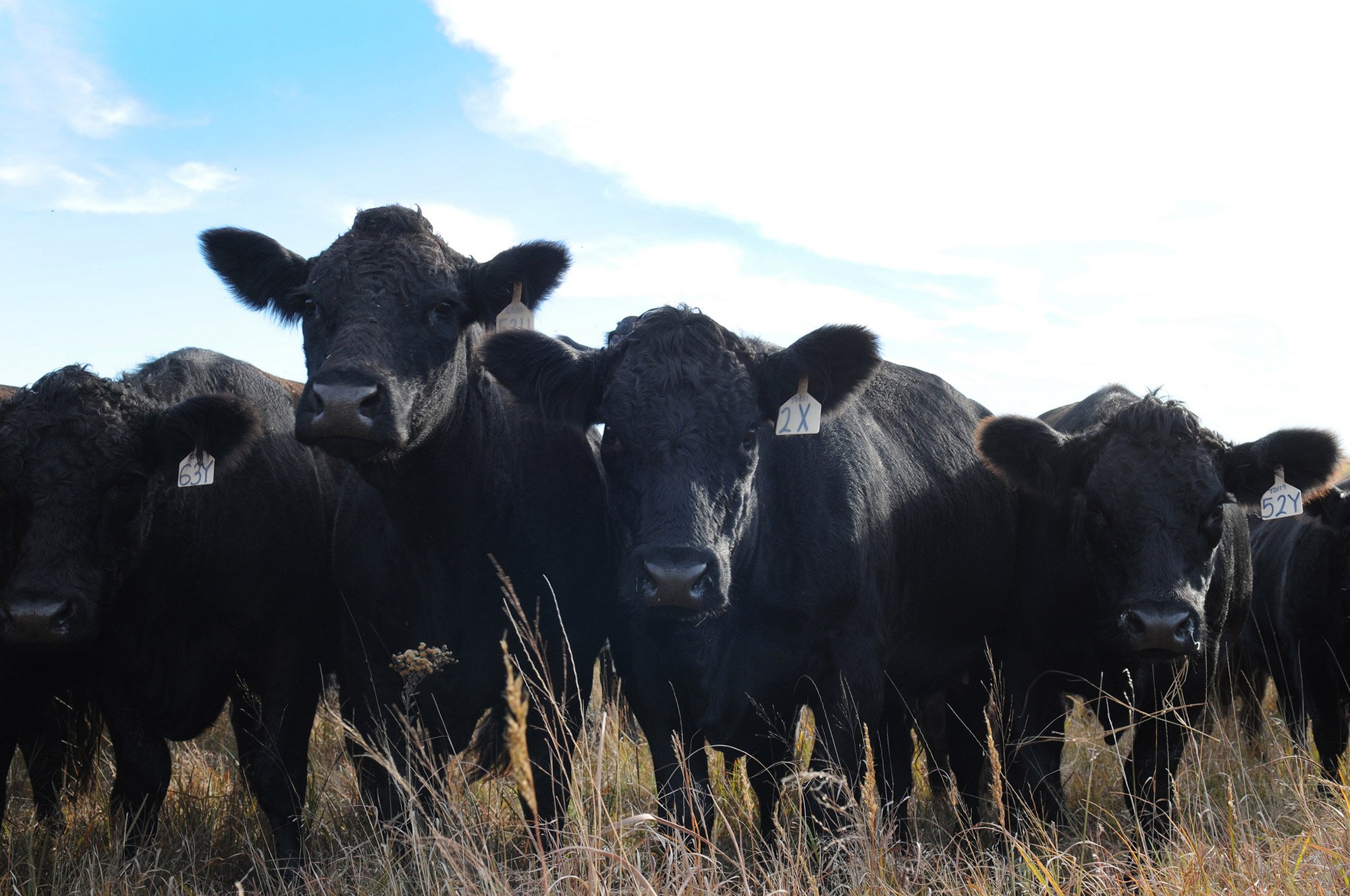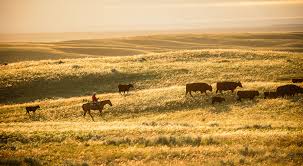Livestock
 |
 |
 |
New Resources
|
Time to Prep: Cattle Breeding Season is Around the Corner (pdf) |
As spring begins to settle into Judith Basin County and calving season starts to wind down, it’s time to start thinking ahead to the upcoming breeding season. Whether you’re running a large herd or managing a smaller operation, taking a few proactive steps now can set the stage for a productive and profitable calving season next year. In this brief update, we’ll touch on key areas of preparation, from bull readiness and cow body condition to synchronization programs and artificial insemination (AI) planning. |
| DYSTOCIA IN CATTLE IS DEFINED AS A DIFFICULT OR ABNORMAL BIRTH. It can occur due to a calf not being in a normal or optimal position for delivery or when the cow has abnormalities that can make delivery difficult. Dystocia is a leading cause of calf loss and a serious economic issue in the beef cattle industry. | |
| This publication outlines strategies for avoiding nitrate toxicity, including proper management, monitoring forage nitrate levels, and appropriate feeding programs. | |
| The BLM and USDA Forest Service have released the 2025 Federal Land Grazing Fees. |
Agriculture - MSU MontGuides
USDA Cattle Prices
Drought Articles and Useful Links
Grazing Management During and After Extended Drought in Montana (PDF) |
Most ranch businesses can readily adjust to one or two dry years in a row, and the effects of short-term drought do not necessitate major changes to most ranch grazing plans. However, three or more successive dry years challenge even the best graziers, stressing their livestock, their finances, and their grazing lands. |
Alternative Forages for Sheep and Goats in Drought Years in the West |
YouTube video outlining forage options. University of Idaho |
Right Risk - Tax Implications of Disaster Losses and Weather related Scales of Livestock (PDF) |
Fires, drought, and other weather related disasters can greatly affect farms and ranches. It is important that farmers and ranchers have an understanding of how disasters affect their tax liabilities. |
Managing Drought Risk on the Ranch: A Planning Guide for Great Plains Ranchers (PDF) |
Planning leads to earlier, more effective decisions. The best time to make drought related decisions is sooner rather than later. |
United States Drought Monitor |
Up-to-date information on the latest drought conditions in the US |
Montana Ag Network: Drought Resources for Ranchers |
KRTV report on drought resources available to ranchers |
Drought on the Ranch |
Drought is inevitable and unfortunately will happen again. There are things you can do before, during and after to reduce your risk. |
Beef Cattle Management During Drought: Reproduction Considerations (PDF) |
Effective drought management strategies for Montana cattle producers should include individual animal records, managing cattle by sex, age, and nutrient requirements, use of assisted reproductive technologies to have a higher proportion of females bred earlier in the breeding season, and having a long- term plan for marketing flexibility of the herd. |
Making Grazing Management Decisions After Severe Drought |
The severe drought in 2021 makes it necessary to adjust grazing management not only for 2022 but into 2023, especially for pastures that will be grazed in spring and early summer of 2022 or 2023. |
Feeding Cattle in Drought |
Stockmen throughout much of the West are dealing a “grand slam” of tough events—severe drought, grasshoppers, fire and extreme heat. Trying to keep cattle healthy and well fed when there isn’t much hay or grass around, as well as keeping your business afloat, has called for hard decisions and creativity. |
Livestock Articles
MSU Farm Management Presentations |
These video presentations cover a broad range of farm management areas. |
Fly Control Management for Livestock |
Fly control in livestock has been a hot topic in the last few years due to potential resistance to conventional fly tags and the introduction of garlic as a feed ingredient to mitigate flies. Fly control management is important to minimize the spread of disease and the negative impacts on production. |
5 Risk Factors for Grass Tetany - Ward Labs |
Baby calves are hitting the ground, and lush, green pastures ready for grazing, and grass tetany potentially. Cattlemen know there’s a danger in those beautiful, green spring grasslands. A nutritional disorder known as Grass Tetany, Grass Staggers or Hypomagnesaemia. |
Body Condition Scores |
Body condition scoring is a management tool that can be used to evaluate the nutritional status of beef cattle. The tool uses a numeric score, 1 to 9, for evaluating the fleshiness, or body energy reserves, of the beef cow and does not require the gathering and working of cows. |
Proper Winter Hay Storage |
The main goal with winter storage is to maintain quality and decrease any dry matter losses that we might incur. Minimizing exposure to the winter elements, especially precipitation which can decrease both hay quantity and quality, is our top priority. |
How Much Copper Do You Need in Your Mineral |
Copper (Cu) deficiency in cow/calf herds has been associated with increased rates of diarrhea and reduced calf growth. Forages do not provide enough copper to meet the needs of beef cows and calves, thus supplementation is needed. However, it is important to note that both under and over supplementation can have negative effects on calf performance. |
Winter Feeding Tips (Don't Waste Your Hay) (PDF) |
"Since your winter feeding program is likely your single largest ranch expense, reducing hay waste can save you money." |
Why Is My RFV So Different From My RFQ? |
Most often, the question is posed when there is a major difference between the relative feed value (RFV) and relative forage quality (RFQ), which ultimately leads to conflict and difficulty determining a forage’s market value. The difference of a few points on the forage quality index can make a huge difference in pricing that hay. |
Feeding Straw - Predicting Forage Production in Grazing Systems |
Straw is a good alternative in rations for cows and sheep if properly supplemented with higher quality feedstuffs. |
Basics of Crop and Livestock Insurance |
Understanding Crop and Livestock Insurance. |
Beef MOOving Minutes |
MSU Beef Cattle Program Beef MOOving Minutes can be found here |
Revegetation Guidelines: Considering Invasive and Noxious Weeds (PDF) |
Revegetation can help degraded plant communities recover after disturbance. Disturbances can be natural, such as floods and fires, or human-caused, such as roads and construction sites, overgrazing, and even weed control activities. Disturbed areas may recover naturally, but in some cases, it may be many years before a desired plant community becomes established or recovers. |
Plants Poisonous to Livestock in Montana and Wyoming |
Poisonous plants contain or produce substances that cause sickness, metabolic disorders, death, or health concerns in animals when ingested. Each year these plants adversely affect 3 to 5% of the cattle, sheep, goats, and horses that graze western United States rangelands, pasture, and forest lands. There are many plants in Montana and Wyoming that have been suspected of being poisonous. |
Ag Across Montana - Podcast |
As the agriculture industry continues to innovate, Ag Across Montana connects producers and industry professionals within the Big Sky State to insights that help their agribusiness thrive. |
Adjusting Livestock Stocking Rates in Good Years and Bad |
The long-term ecological and financial health of a ranch requires that the livestock population be balanced with the forage supply. Soils, plants, water quality, wildlife, livestock performance, and profit suffer when livestock numbers are too high or too low. |
Grazing and Pasture Lease Resources |
Grazing land and pasture leases can be useful tools for cattle ranchers, and during and recovering from drought, they become even more important. |
In Versus Out? Livestock Fence Laws |
Every rural Montana landowner should know whether they are responsible for fencing their land to keep their own livestock within the confines of their property, or whether they are responsible for fencing their land when they want to prevent other people’s livestock from roaming onto their property. |
Livestock Brands in Montana: An Important Component of an Estate Plan |
Misunderstandings can develop about what happens to a brand and livestock marked with the brand after the death of an owner. This MontGuide explains Montana brand ownership laws as they pertain to estate planning. |
Livestock Useful Links
American Sheep Industry Association |
The American Sheep Industry Association (ASI) is the national organization representing the interests of more than 100,000 sheep producers located throughout the U.S. From East to West, pasture-based flocks to range operations, ASI works to represent the interests of all producers. |
Montana Department of Livestock |
The purpose of the Montana Department of Livestock is to control and eradicate animal diseases, prevent the transmission of animal diseases to humans, and to protect the livestock industry from theft and predatory animals. |
Montana Stockgrowers Association |
Look to MSGA to keep you up to date on critical news and information vital to the cattle industry. |
Montana Weed Control Association |
MWCA members are dedicated to terrestrial and aquatic invasive species management. Our members include professional weed managers representing many government agencies, private and commercial applicators, non-governmental organizations and concerned citizens. |
Montana Wool Growers Association |
Montana Wool Growers was established in 1883, making it the states oldest agriculture organization in Montana. Montana Wool Growers Association advocates for, and works on behalf of, Montana’s farm and ranch interests, namely Montana’s sheep industry. |
MSU Extension Services MontGuides can be found on the MSU MontGuide page covering a broad range of topics.
The U.S. Department of Agriculture (USDA), Montana State University and Montana State University Extension prohibit discrimination in all of their programs and activities on the basis of race, color, national origin, gender, religion, age, disability, political beliefs, sexual orientation, and marital and family status. Issued in furtherance of cooperative extension work in agriculture and home economics, acts of May 8 and June 30, 1914, in cooperation with the U.S. Department of Agriculture, Cody Stone, Executive Director of Extension, Montana State University, Bozeman, MT 59717.
